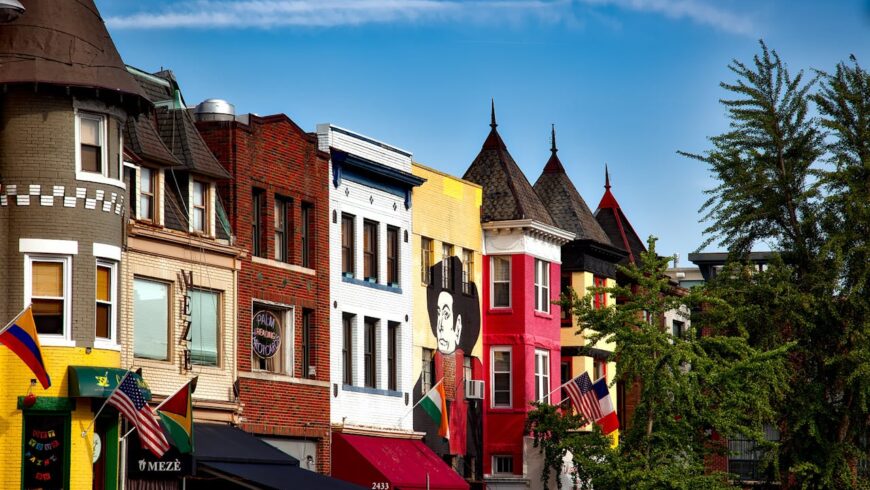Gentrification is a complex process that reshapes neighborhoods. It often improves infrastructure, but it also causes longtime residents to leave due to rising costs. If you’re planning to move into gentrifying neighborhoods, the way you do it matters. Your decisions can either support the people who’ve lived there for years or accelerate their displacement. However, there are ways to move ethically without contributing to harm. You can still do it and yet respect the area’s history, build healthy relationships, and make thoughtful choices about housing, renovation, and daily life.
Understand the History Before You Arrive
You’re not just moving to a location—you’re joining a community with a specific story. Every neighborhood has a past that shaped its identity. Many areas facing gentrification have endured decades of systemic disinvestment, redlining, and displacement. Before you unpack your boxes, take the time to learn how that history continues to affect people who live there now.
Read articles written by longtime residents. Visit local libraries and ask about community archives. Many neighborhoods also have oral history projects or walking tours run by locals. These are not just educational—they are grounding.
Knowing the context allows you to act with care. You’ll better understand the effects of your presence and avoid assuming that newer is always better. People have been working to improve their communities long before new buyers or developers showed interest. Respecting that effort should be your starting point.

Support Local, Not Just What’s New
Many small businesses disappear when gentrification spikes. National chains move in, pushing up rents and changing the local economy. You can help slow that process by directing your money to existing local businesses instead of newly opened ones targeting wealthier newcomers.
In addition, go to the neighborhood laundromat instead of driving elsewhere. Buy from nearby grocers. Pick the family-run café even if it doesn’t show up on trendy food blogs. If you’re hiring a plumber, mechanic, or contractor, choose someone based nearby.
Your everyday decisions support either resilience or erosion. Avoid convenience if it sacrifices community. For example, instead of ordering from major online retailers, consider buying from small, sustainable shops and reuse centers. This also reduces waste and helps you avoid eco-slump.
Build Real Relationships With the People Already There
You’re not just moving into a home—you’re entering someone else’s community. Start with simple steps. Say hello to people on the street. Join neighborhood cleanup days or community gardens. Attend town hall meetings or public forums. Don’t just show up when you’re angry about something.
Importantly, listen more than you speak. Learn from your neighbors before proposing changes. Respect their priorities and experiences. If someone’s lived in the area for 40 years, they understand it better than a new resident ever could. These relationships are your best defense against isolation, too. Newcomers often feel out of place—but that’s a reason to connect, not to reshape everything.

Don’t Contribute to Displacement Pressure
Moving to a new place should not come at the cost of someone else being pushed out. So ask yourself: are your choices driving up demand or putting pressure on rental stock? Above all, skip bidding wars, especially if you’re in a position of financial advantage. Don’t pay far above asking prices—this signals other buyers to do the same.
Instead of silent approval, push back when you see evictions or rent hikes targeting long-term tenants. Support policies that protect renters and low-income families. Vote for local housing measures and engage with housing justice groups in your city.
In a straightforward manner, encourage your landlord or building manager to cap rent increases or keep units affordable when possible. Yes, it may sound like a small influence, but collective voices matter. Want to think even more sustainably? Look at eco-conscious housing or ask landlords about efficient appliances and water conservation. The global water waste crisis is real, and ethical housing includes environmental stewardship.
Renovate Responsibly and Stay Grounded in Context
People often rush into upgrades after moving, but too many drastic changes signal that an area is being reshaped for a different demographic. This can speed up property value hikes and displacement.
To add to that, if you own, keep renovations in line with neighborhood standards. Use local contractors and prioritize fixes over flashy redesigns. Respect the character of the home and the style of surrounding buildings.
Don’t pressure your landlord to install luxury upgrades. These “improvements” often trigger rent increases, pricing out long-term tenants. If you want a nice space, ask if your changes can be done without impacting others. However, before adding solar panels or smart systems, consider how to dispose of old materials. As tech trash can build up fast, you should be mindful of how you dispose of it.
How to Move Into Gentrifying Neighborhoods Without Causing Harm
Here’s where the choices become active, not just thoughtful. To move into gentrifying neighborhoods responsibly, start by picking homes that aren’t under financial pressure—properties that have been listed for a while, not ones being contested or flipped.
Next, avoid lobbying for changes that only benefit new arrivals. If you push for more police presence or want schools “cleaned up” without understanding the local context, you may be enforcing biases instead of improving safety or education. When you relocate to such communities, make sure you’re adding value for everyone, not just for yourself. Do your part to support housing equity, public access, and open spaces.
Join coalitions that include long-term residents. Amplify their voices rather than trying to lead efforts. Ask who is already organizing in your area and offer your support. Lastly, be open to criticism. You may get things wrong. Learn from it. Adjust. Being a better neighbor doesn’t require perfection—just accountability.

Wrap-Up
Gentrification doesn’t have to mean erasure, but it often does. If you plan to move into gentrifying neighborhoods, be ready to act with care and responsibility. Educate yourself before stepping in. Spend your money where it matters. Show up without taking over. Support your neighbors and advocate for affordable housing and sustainability. Small decisions—where you shop, who you talk to, how you renovate—add up. Being ethical isn’t about following a script. It’s about paying attention, being present, and staying aware of the impact you have.
Author Bio:

Edie Trudeau is a content writer at Logicstics, where she focuses on ethical moving practices and community-conscious relocation. With years of industry insight, she helps individuals make informed decisions when moving into evolving neighborhoods. Edie believes every move should support—not disrupt—the people already living there.




